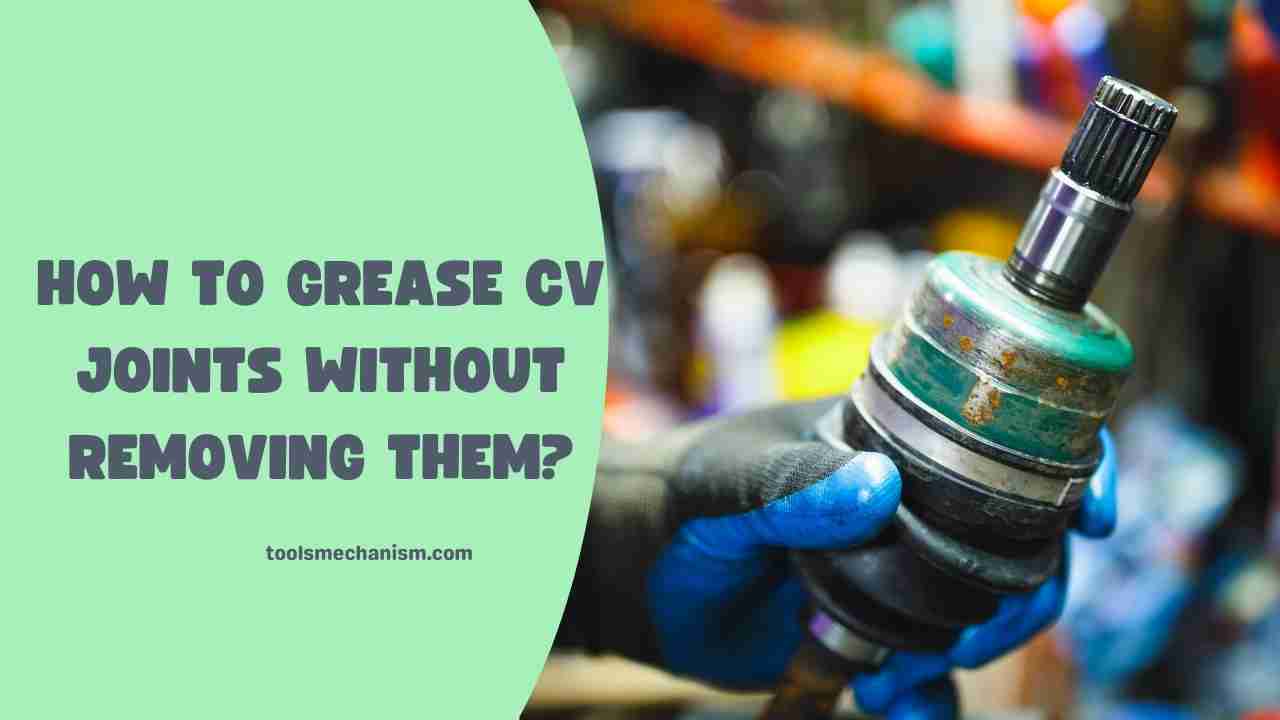Learning how to grease cv joints without removing them can be a huge time-saver for any DIY mechanic, helping to postpone a much larger and more complex repair job. A CV joint is a point where the transmission of a vehicle meets the drive wheels. Each drive wheel has a pair of CV joints. The inner joint connects the transmission to the axle and the outer joint connects the axle to the wheel. The joints ensure that the velocity of your vehicle remains the same even if the vehicle gets into a pothole. The joint is usually covered by a rubber boot.
Since the CV joint connects several metals together, you need to grease it often to reduce friction and the rate of wear and tear. When the joint runs out of grease, it will begin to make certain noise and the noise will get louder and louder until you re-grease the joint.
Table of Contents
What Does a CV Joint Do?
How To Grease CV Joints Without Removing Them? So, We have to What Does a CV Joint Do? CV stands for constant velocity. So, a CV joint actually means a constant velocity joint. The joint connects the drive wheel to the transmission. As explained above, every drive wheel has two CV joints – the inner joint and the outer joint. The inner joint connects the transmission to the axle, while the outer joint connects the axle to the wheel.
As its name implies, it helps the wheel to maintain its constant velocity when the tire hits a pothole or any uneven surface. It connects two rotating shafts together. Without adequate grease, the shafts will be rubbing against each other.
The Method: How to Grease CV Joints Without Removing Them
Step 1 : In whatever you do, safety should always come first. So, you need to place the vehicle on two jacks. Raise the jacks high enough to give you room underneath.
Step 2 : Remove the tire completely. It will remain the hub.
Step 3 : Turn the wheel outward from the steering. This will expose the CV joint.
Step 4 : Get a grease gun with a pointed mouth. Stick the boot with the mouth of the grease gun and pump some grease into the joint.
Step 5 : Locate the hole created by the grease gun and seal it with super glue.
Step 6 : Clean the other parts of the wheel.
Step 7 : Repeat steps 2 – 6 for the other drive wheels.
Step 8 : You can now fix the tires and wind down the jack.
What Happens If the CV Joints Run Out of Grease?
If your CV joints run out of grease, the rotating shafts will rub against each other. The rate of wear will be higher. And the noise level will be higher too. If you still don’t do anything about it, the wheel may pull out while in motion. This will render the car undrivable. You’ll either tow it away or fix it at the very spot.
Before that happens, the joint would have given enough warning signs apart from the increased noise. Each time your turn the steering wheel to the right or left, it will make a click sound.
Should You Use Dielectric Grease on Battery Terminals?
Yes. It is a good idea to cover your battery terminals with dielectric grease. This will prevent the battery terminals from corrosion. Dielectric grease is a good choice because it does not conduct electricity and it will remain pliable for a long time. Most importantly, it has a very high melting point. That’s why the little grease you apply to your terminals will remain there for a long time.
Where Do You Put Dielectric Grease on Battery Terminals?
Make sure you connect the leads on the terminal before you cover each of them with some dielectric grease. The grease will prevent vapor from forming on the terminals. If dielectric grease isn’t available, you can apply petroleum jelly too. Almost every type of grease can prevent corrosion.
Can I Use Silicone Grease Instead of Dielectric Grease?
Yes, of course. In fact, silicone grease is the best kind of grease for battery terminals because its melting point is very high. It won’t liquefy at high temperatures or in summer heat. That’s why silicone grease will not drip at high temperatures. The grease is rated for -40OF to 400OF.
Can I Use Regular Grease Instead of Dielectric?
Yes, you can use regular grease like Vaseline on your battery terminals but you’ll have to re-grease the terminals very often. Regular grease has a low melting point.
So, it can easily melt. If you prefer to use regular grease, you have to apply it at least once a fortnight. However, you must keep in mind that the best types of grease to prevent battery terminals from corroding are dielectric and silicone grease.
What is the Difference Between Dielectric Grease and Silicone Grease?
Actually, dialect and silicone grease have several differences and not just one. Here are the differences.
1. Their forms are different
Dielectric grease is translucent in form. That’s why it is used to seal electrical conductors. It is also used to protect electrical conductors from dirt, sand, dust, and debris. On the other hand, silicone grease is waterproof. It is prepared by mixing thickener with silicone oils. It is best for preserving rubber parts.
2. Their Costs are different
Due to the fact that dielectric grease has more uses than silicone grease, it is also more expensive than silicone grease. However, you can use each of them on your battery terminals.
3. They have slightly different chemical properties
Although both of them do not conduct electricity, dielectric grease stays pliable while silicone grease will eventually harden up. That’s the reason why dielectric grease has more applications than silicone grease.
4. Their thickness differs
Silicone grease is much thicker than dielectric grease, even though both of them have high melting points.

Final Words
To wrap up the piece, here’s a little recap of the main points. To grease the CV joint, you need to raise your vehicle with a jack and remove the tire. Turn the wheel outward to give you better access to the joint. Poke the rubber boot with a sharp object, and pump some grease into the joint through the hole you created. When you’re through, seal the hole with super glue.
While not a permanent substitute for replacing a torn boot, knowing how to grease cv joints without removing them is an excellent skill for quick maintenance and noise reduction.

